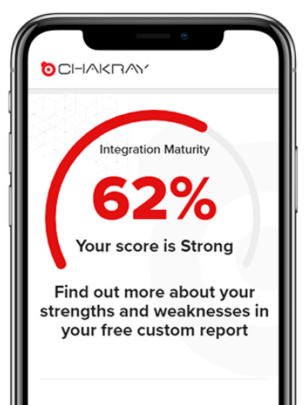As the world moves towards the future, businesses may struggle to catch up with the fast-paced nature of digital development. Companies often get stuck on the question of where they need to be; this includes factors such as improving in-house systems, procuring new technologies, upskilling employees with sought-after competencies on the market, and much more. But before this question can be answered, organisations need to introspect on their current state of affairs. Also known as the as-is state, this is the starting point for any digital transformation campaign. One of the benefits of a digital readiness assessment is its ability to identify the boundaries of this as-is state clearly.
What is digital readiness?
A company’s as-is state is a major indicator of its digital readiness, the measure of an organisation’s preparedness to make changes to their IT infrastructure. The level of an organisation’s digital readiness may change over the course of time, as the digitalisation of business processes is a constantly evolving journey with a long-term vision in mind. But everyone needs to start somewhere; a digital readiness assessment or digital maturity assessment is a procedure used to ascertain a company’s degree of readiness to switch over to digital means. It is thought to be the first of many small steps an organisation can take towards welcoming positive change.
How is digital readiness and maturity measured?
There is no official framework to measure digital readiness or digital maturity. Digital maturity is a flexible concept that can be measured using a variety of frameworks—otherwise known as digital maturity models (DMMs). Each of these models differ in the stages, dimensions, and methods they use to gauge digital maturity.
- Dimensions refer to the areas within a business that could benefit from digital transformation. For example, some companies may need to focus on their delivery methodology, while others may seek to enhance the skills and capacity of their workforce. A DMM helps benchmark the company’s capabilities within these digital maturity dimensions.
- Stages or states indicate the digital transformation maturity level a company currently possesses. These digital maturity stages form a classification system for an organisation’s initial or baseline relationship with technology—how extensively and effectively it has been implemented into its daily operations. For example, a company with an emerging level of digital maturity or readiness would have just recently launched some advanced discussions on digital transformation. However, a company with a higher level of digital maturity—a digitally mature company—might already demonstrate strength in most or all of the dimensions highlighted in a digital transformation maturity model. This ‘strength’ defines the company’s use of tools and resources aimed at digital transformation, as well as their ability to turn technology into an advantage in all the key dimensions of digital maturity.
- Methods refer to the way in which digital maturity is calculated. Usually, companies opt for a high-level evaluation such as a digital readiness survey or questionnaire. These digital readiness assessments are derived from DMMs and frame questions by targeting common pain points and past experiences—both positive and negative—of businesses.
An enterprise must pick a digital readiness assessment questionnaire that best suits their priorities. This could mean using a generic maturity assessment which covers a range of important dimensions, or a more detail-oriented assessment that focuses on specific scenarios and areas—sometimes even specific industries—within a business. For example, it could focus on one particular marketing use case or the processes involved in customer relationship management).
When is a digital readiness assessment necessary?
It should be noted that attaining digital readiness or maturity is not the end goal of an organisation. Instead, it is a precursory stage to a dynamic digital transformation journey. This is why a digital readiness assessment is an important first step for any organisation committed to the process of digitalisation, whether this involves transforming just a section of its daily operations or taking a more widespread approach. This assessment allows companies to know where they stand, prompting them to increase their digital maturity level before attempting to achieve a successful, continual digital transformation.
Steps to reach a higher level of digital readiness
To realise digital maturity efficiently, a few preconditions must be established within an organisation. The steps to digital readiness are:
- Establishing robust leadership: Leaders with a strong vision drive long-term change within a company’s digital landscape.
- Welcoming innovation: A company might never streamline existing ways of working if it is averse to experimentation and the failure that sometimes accompanies it. Thus, business leaders must ingrain a sense of innovation into the company’s core ideals and culture.
- Prioritising strategy: Digital innovation should be actively inculcated as a part of the company’s overall strategy. This is so that technology becomes a vital organ in the larger body of the business, every facet of it synchronising with digital development.
- Building support systems and skill pools: Having digital specialists to answer questions at crucial moments is key to achieving digital maturity. This extends to recruiting employees with the right technical skills to aid your company’s operations.
- Organising processes: Standards and practices within an enterprise should not hinder digital transformation. They must be formulated in such a way that they adapt well to technological change.
Benefits of a digital readiness assessment
Listed below are some of the benefits and positive effects of a digital readiness assessment.
Assists the company in understanding its present-day digital ecosystem
This is one of the main benefits of a digital readiness assessment. Knowing a company’s current technological scenario—its strengths and weaknesses in the digital realm—can help leverage existing IT resources effectively and add new ones where required.
Highlights major drivers of digital transformation
Digital readiness survey questions are designed to uncover important facets of digital transformation that companies should consider. Some of them are workforce competencies, teamwork, business process governance, risk tolerance, IT architecture and governance, data management, and so on. Bolstering digital readiness in these areas will make the road to digitalisation less bumpy.
Highlights potential obstacles and pain points in digital transformation
Improper fulfilment of the above-mentioned facets could lead to a failed transformation initiative. This includes corporate conditions such as inadequate data, communication gaps, lack of skilled personnel, and security issues.
Highlights the steps and capabilities needed to reach a higher level of digital maturity
A digital readiness assessment is the first step towards formulating a digital roadmap or strategy that will help the organisation strengthen its command over major drivers of transformation.
Facilitates digital capability development
Digital transformation will not take place until every employee is equipped with the ability and attitude to function in a technologically-dependent environment. This will enhance the digital capability of the company as a whole, turning it into an industry leader in the domain of digitalisation.
Conclusion
The benefits of a digital readiness assessment are plenty. It is also the best place to begin the future ready transformation of your business. Analysing your current stage can help formulate a digital roadmap unique to your circumstances as an enterprise. By understanding your own digital maturity, you can identify your dimensions of success, what you can learn from them, and how you can transfer your learning to improve upon dimensions that still need your progress.
Sometimes, getting started can be just as big of a challenge as the actual transformation process. Our digital transformation readiness assessment might be exactly what you need. You can use it to generate a report evaluating your company against our six pillars of digitalisation. For more information, you can always contact us; we can help you delineate your next steps.







